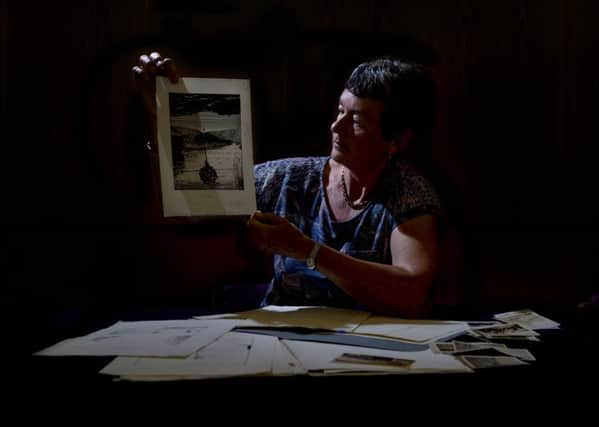Swallows and Amazons: A book for all seasons


WITH its summer idyll of campfires and children playing pirates Swallows and Amazons is one of those adventure stories that has stood the test of time.
But while Arthur Ransome’s much-loved book evokes genteel images of a bygone era, the author himself was a far more intriguing character than any of his own creations.
Advertisement
Hide AdAdvertisement
Hide AdFor behind his thin-rimmed spectacles and smart, bookish appearance was a man who reported on the 1917 Russian Revolution, fell in love and later married Leon Trotsky’s personal assistant and found himself embroiled in the world of espionage – not exactly your average children’s author.
Ransome has been back in the news recently thanks to a new film adaptation of his Swallows and Amazons tale, which hits the big screen next weekend.
His own story is a fascinating one and his diaries, along with a huge tranche of archive material including over 3,500 photographs and scores of letters and telegrams, are held at the Special Collections library at the University of Leeds, where he once studied.
Ann Farr, who used to work at the library and is an Arthur Ransome Society trustee, believes collections like this are a rarity. “It’s a very important archive because he was a man of so many different parts and this covers them.”
Advertisement
Hide AdAdvertisement
Hide AdAmong the treasure trove of material are his original line drawings, which will be familiar to all those who have read the books. Although, interestingly, they nearly didn’t happen. The publishers had initially commissioned illustrators to come up with the artwork for the book but Ransome didn’t like it. “They weren’t what he saw so in the end he did his own illustrations even though he’d had no training as an artist,” explains Farr.
“He had a clear sense of what he wanted and they were only line drawings, he never drew faces. People often say they are very child-like and aren’t very sophisticated but they were ideal for a children’s novel.”
The letters, too, tell an interesting story. “Ransome had such appalling handwriting that he started using a typewriter and we’re very fortunate that he did because we either have the original or a carbon copy of a lot of his correspondence.”
Most of the letters were written to friends, relatives and some of his literary chums. “He was a prolific correspondent as a lot of people were at that time and we have something like 300 letters that he wrote just to his mother,” says Farr.
Advertisement
Hide AdAdvertisement
Hide AdIn amongst them he talks to her about writing Swallows and Amazons. “It didn’t sell very well to start with. It wasn’t an instant hit and the first edition wasn’t illustrated and it’s interesting to read his thoughts about it.”
There’s also a letter to Ransome from J.R.R. Tolkien in which the author reveals he’s changed some of the language in The Hobbit and that book sales have been slow.
It was sent in 1937, shortly after Tolkien had written The Hobbit. By this time the first of the Swallows and Amazons had been published and Ransome was the better known of the two writers and Tolkien thanked him for the changes he had suggested. He also promised to send Ransome a revised copy of the book “if there is a reprint”, adding somewhat gloomily that “sales are not very great”.
Tolkien wasn’t the only famous figure whose correspondence are kept in the archive. During his time in Russia he struck up friendships with leading Bolshevik figures including Trotsky, Karl Radek and Lenin himself – a letter from whom is held in the collection. “He found himself in a unique position and he had access to meetings and people that most other journalists couldn’t get,” says Farr.
Advertisement
Hide AdAdvertisement
Hide AdRansome was born in Headingley into an upper-class family. But despite the fact his father was a history professor, the young Ransome was a reluctant student – he studied science at Yorkshire College (which became Leeds University) but left before completing his degree after stumbling on a book about William Morris which inspired him to become a writer.
In 1913, he left his wife and young daughter and travelled to Russia to write fairy tales. He then found himself covering the collapse of Tsarist Russia and the Bolshevik uprising for the Daily News.
The Yorkshireman’s involvement with the 1917 Revolution has long been the subject of speculation. In 2005 National Archive records revealed he passed important information about the Bolshevik regime to MI6 and the Foreign Office.
It’s now nearly half a century since Ransome’s death but the Swallows and Amazons books have never been out of print. So why has their popularity endured?
Advertisement
Hide AdAdvertisement
Hide Ad“They’re about children being allowed to do things out on their own and given the responsibility for themselves – of camping, cooking and making fires. There’s a sense of freedom that children don’t have today, but wouldn’t they love to?” says Farr.
“There’s this great sense of adventure in the books. Ransome was so good at creating this vivid world, as if he was writing for a child, and that’s why they still have such great appeal.”
And Ransome, she believes, still deserves our thanks and admiration. “He might not be quite as famous as say Roald Dahl or Beatrix Potter, but he’s certainly up there.”